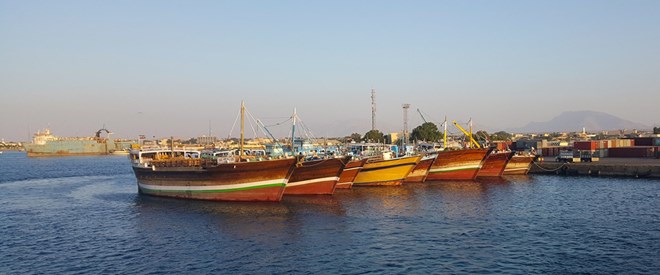Friday, November 13, 2020
Anish Kapadia
The government hopes that promising geology and attractive fiscal terms will attract the interest of IOCs to develop its offshore oil discoveries

Great excitement and interest accompanied Somalia’s recent launch of its first offshore oil and gas exploration licensing round, with more than 250 energy companies and investors attending the virtual roadshow.
Enthusiasm is being fuelled by promising geology, top quartile fiscal terms, reduced concern about security issues offshore and the backdrop of a much improved political and economic situation in Somalia.
Somalia has adopted a refreshingly professional approach to the licensing round, with legislation that ensures the sanctity of contracts and is more transparent and investor friendly than many other established petroleum provinces around the world. Encouragingly, two of the largest integrated oil companies, Shell and ExxonMobil, are already present, having paid $1.7mn last year to lease offshore blocks for 30 years.
Despite some recent faltering investor confidence in oil and gas projects, there is the strong conviction by existing players that oil and gas demand will continue for years to come, even if it peaks in the next decade. To meet that demand in the face of declining existing production and a lack of material oil discoveries globally, there is a need for new fields to be opened. The combination of rock-bottom exploration costs and highly advanced seismic imaging helps reduce the risk-adjusted cost for new projects, with many breaking even at sub-$40/bl Brent.
Frontier exploration is still very much alive, demonstrated by the recent discoveries by Total and partners in South Africa. Moreover, Shell and Qatar Petroleum have entered multiple different frontier exploration licences in Africa.
Somalia represents one of the last truly unexplored oil frontiers globally, albeit highly prospective, with only one offshore well and nothing in deep water along its vast coastline. Shell, ExxonMobil, Eni and Chevron all had blocks in Somalia in the 1950s, suggesting its exploration potential has been evident for the best part of a century, but conflict has prevented further investigation.
Seismic imaging
Geographically, there are large oil and gas accumulations in the wider region. Evidence is growing for a working petroleum system offshore Somalia, which is expected to be oil prone, unlike the massive gas finds further to the south in Mozambique and Tanzania. The extensive 2D seismic data (shot without security incidents) has revealed "extraordinary" and "gigantic" structures, according to seismic company Spectrum. Industry data and insights group TGS believes there is a strong possibility of oil-prone prospects offshore the whole length of the Somalian margin, potentially holding 30bn bl. The geological data also reveals that there are four source rocks mature for oil and gas generation and there have been offshore oil seeps—80 individual non-anthropogenic sea surface slicks—and oil and gas shows in several onshore wells in Somalia.
Source rock presence, distribution and maturity are largely de-risked for oil plays. There are many potential reservoirs to house the hydrocarbons, with a rich variety of trapping configurations—both sandstone and carbonate with large potential closures. In addition, there are huge limestone reefs, larger than 1,000km2, and sandstone tilted fault blocks providing excellent reservoirs. Another positive is the presence of direct hydrocarbon indicators such as visible flat spots.
Political stability
Somalia itself has seen rapid and historic change. After 20 years of conflict and violence, the country adopted a provisional constitution in 2012 and has since enacted a wide range of positive fiscal, political, social and economic reforms allowing it to re-engage with creditors.
In 2020, the IMF recognised Somalia had taken the necessary steps to begin receiving debt relief, allowing a return to the international financial system after 30 years of exile. This should allow the country to reduce its debt-to-GDP ratio to just 9pc, from 111pc at the end of 2018. Somalia has further committed to maintaining macroeconomic stability and putting in place a set of reforms focused on fiscal stability, improving governance and debt management—all of which give confidence to foreign investors.
The government clearly recognises the need for a fiscal and regulatory regime that is internationally competitive to attract investment. The new fiscal framework in place for the upcoming licensing round uses best practice from production-sharing agreements globally. Governance is also strong, with the governing Somali Petroleum Authority separate from the Somali National Oil Company. Importantly, Somalia will recognise all contracts signed over the last 30 years.
Through foreign investments and partnerships, many African countries are strategically harnessing their recently discovered oil and gas resources to make far-reaching and sustainable improvements for their people and communities.
Somalia is well placed to join this transformation.
Anish Kapadia is founder and managing director of AKap Energy, an oil and gas consultancy providing research to investors as well as strategic and financial advice to companies. Before this he spent 15 years in equity research as a European oil and gas analyst at UBS and Tudor Pickering, where he was head of research.